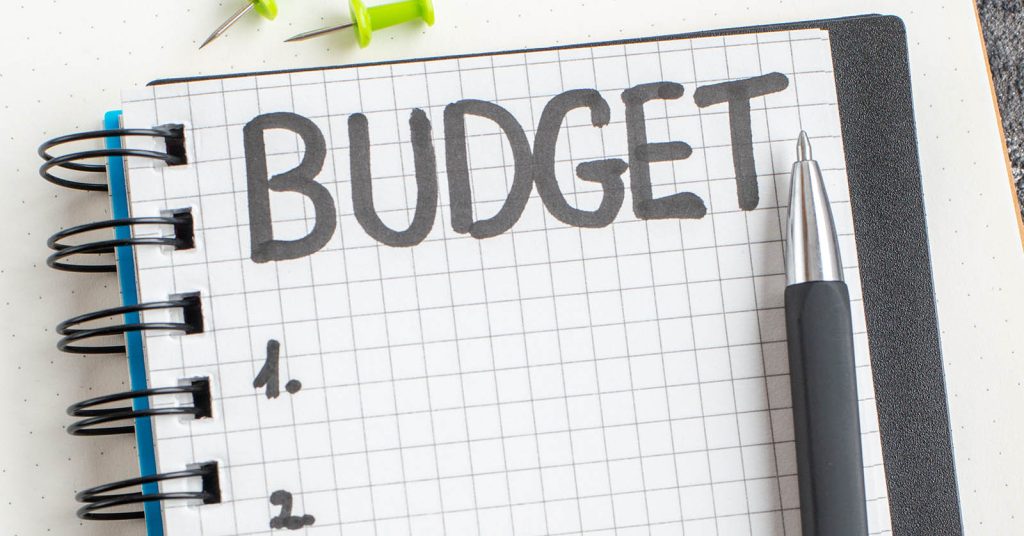The holidays should feel generous, not like a slow-motion swipe-fest that turns into panic on your January statement. Every year, Americans spend billions on gifts, travel, décor, and “one more little thing” that quietly breaks the budget. You can keep the traditions, spoil your people, and still protect your cash flow by deciding your limits before the season starts, choosing how you’ll pay, and cutting emotional overspending off at the source.
Below is a practical holiday spending system you can reuse every year — no spreadsheets required unless you enjoy them. You’ll map your total budget, assign it to real categories, use safer payment strategies, and know exactly how to adjust if plans change or you overshoot.
Key Takeaways
- A written holiday budget beats vibes — decide your total first, then divide by category.
- Use credit strategically, not emotionally — rewards only help if you pay in full.
- Lock in one clear number — monthly savings or a separate “holiday fund” keeps you out of January debt.
- Plan a backup — if you overspend, have a 60–90 day payoff and trim list ready.
Why January Debt Happens (And How to Stop It)
January balances rarely come from one big purchase; they come from dozens of small, untracked decisions. A coffee here, upgrade there, extra gift for the office swap — none feels huge in the moment. But when spending isn’t tied to a hard ceiling, it expands to match whatever credit is available.
Recent retail surveys show holiday spending staying high, even when budgets are tight, which means more people lean on credit cards to “smooth it out.” Many cards now carry APRs above 20%, so a few hundred dollars can quietly generate significant interest if you only make minimum payments. That’s how a joyful December becomes an expensive March.
The fix is not “no fun” or “no gifts.” The fix is a pre-committed plan you can see, share, and check against as you go. Instead of “we’ll try to be reasonable,” you decide: “Our total holiday budget is $X. If it doesn’t fit inside that number, we adjust, not swipe.”
Clarity also reduces emotional pressure. When you know your ceiling, you can say no without guilt: the budget is the bad cop, not you. This helps with extended family expectations, kid wish lists, and last-minute invites.
Finally, a plan makes it easier to say “yes” to the right things: buying earlier, using deals intentionally, and funding experiences that actually matter to your family instead of defaulting to panic buys on December 23.
Start With One Number: Your Holiday Spend Ceiling
Before you look at sales, emails, or wish lists, decide your all-in holiday number. This should include gifts, travel, food, décor, events, charitable giving, and “miscellaneous festive nonsense.” If it costs money in November–December, it belongs inside this number.
A simple guardrail: keep holiday spending below an amount you can pay off in full by the end of January without touching your emergency fund. If that number is $600, your holiday budget is $600, not $1,200 “because points.”
Use last year as a reality check. Pull your statements for November–January and tag holiday charges: you may be surprised how high it went. If last year was $1,000 and hurt, aim lower and plan smarter this time.
| Method | How to Set Your Number | Best For |
|---|---|---|
| Income-based | Cap at ~1–1.5% of annual take-home pay. | Steady income, wants a simple rule. |
| Cash-flow based | What you can pay off in 1–2 pay cycles. | Anyone avoiding all rolling balances. |
| Save-ahead fund | Monthly auto-transfer into “Holiday” account. | Planners starting early in the year. |
Break It Down: Gifts, Travel, Food, and “Everything Else”
A single lump sum is helpful, but categories are what stop real-life overspending. Once you have your total, split it into 4–6 buckets that match your reality. Keep them simple enough that you’ll actually track them.
Common buckets:
- Gifts: family, friends, kids’ friends, work, teachers, Secret Santa.
- Travel: flights, gas, lodging, pet care, airport parking.
- Food & hosting: big meals, baking, potlucks, takeout on busy days.
- Décor & extras: lights, wrapping, cards, matching PJs, small traditions.
- Giving: charities, mutual aid, end-of-year donations.
Assign a dollar cap to each bucket and a quick per-person or per-event limit. For example: “Total $800: $400 gifts, $150 food, $150 travel, $50 décor, $50 giving.” Write specific gift caps (e.g., $25 for nieces/nephews, $10–15 for teachers) so decisions are made before you’re staring at shelves.
As you spend, do a 2-minute check-in once a week. Look at your card and bank app, label charges by bucket, and see what’s left. The goal isn’t perfect accounting; it’s catching creep early while you can still adjust.
Choose How to Pay: Cash, Debit, or Credit (Without Regrets)
Your payment method is part of the plan. Use tools that support your budget, not ones that make it fuzzy. Credit cards can be useful for protections and rewards, but only if there’s a realistic payoff plan attached.
Strong options:
- Dedicated checking or savings pod: Move your holiday amount into a separate space and spend only from there.
- One “holiday card”: Put all holiday charges on a single low-APR or rewards card and track its balance vs. your plan.
- Cash envelopes / prepaid: Effective if you overspend easily with cards; when it’s gone, you’re done.
If you use credit, treat it like a charge card: pay in full by the due date. Rewards never beat 20%+ interest. If you’re truly using a 0% promo, set automatic fixed payments to clear the full amount before the promo ends; mark that end date in your calendar.
Avoid store cards opened on impulse for “15% off today” if you’re already juggling balances. Extra lines with high APRs can add risk for minimal benefit.
Stay Safe: Avoid Scams, Fake Deals, and “Fees That Steal”
The holiday rush is prime time for scams, junk fees, and dark patterns that quietly inflate what you spend. A clean plan should also keep your money safe. Stick to trusted retailers, type URLs directly instead of clicking random links, and be skeptical of “too good to be true” offers, especially in social media ads or unsolicited emails.
Use secure payment methods with fraud protections (major credit cards or reputable payment platforms) rather than debit cards on unknown sites. Monitor your accounts weekly; catching fraud early limits damage and stress.
Watch for padded shipping, required “protection” add-ons, or auto-enrolled subscriptions at checkout. Those can blow up a careful budget.
When shopping online, confirm return policies, restocking fees, and shipping timelines so you aren’t forced into costly last-minute replacements if something arrives late.
Protecting your information and avoiding hidden costs is part of staying out of January debt — money lost to scams or fees still has to be repaid.
If You Overspend Anyway: 30–90 Day Rescue Plan
Even with a plan, life happens — travel changes, medical bills, or just a few too many “yes” moments. If you end the season with a balance, move fast and treat it like a short-term project, not a vague problem.
First, total all holiday-related balances across cards. Then choose a payoff window: 30, 60, or 90 days max for a one-season overspend. Divide the total by your chosen months to get your target payment.
Next, temporarily cut or pause nonessential subscriptions, dining out, or extras to free up cash. Direct that savings into your targeted payments automatically so you’re not relying on willpower every week.
If your rate is high, consider a reputable 0% APR balance transfer with no or low fee — only if you’re confident you’ll be disciplined and understand the terms. Avoid any company pushing “holiday debt relief” with up-front fees or promising to erase legitimate debts.
Finally, capture the lesson while it’s fresh. In January, set up a small automatic transfer (for example, $40–$80 per month) into a dedicated holiday fund so this year’s pain becomes next year’s protection.
Frequently Asked Questions (FAQs)
How much should I budget for the holidays?
A practical range is what you can pay off in full by the end of January without touching your emergency fund. For many households, that’s roughly 1–1.5% of annual take-home pay, but your number should reflect your income, existing debt, and goals.
Is it ever okay to use a credit card for holiday shopping?
Yes, if you’re using it intentionally — for buyer protections, tracking, or rewards — and you have a clear plan to pay the balance in full on the first statement. If you’re already carrying balances or uncertain you can pay it off, treat credit cards as off-limits for extras.
How can I handle gifts when money is tight?
Set a strict low cap, prioritize children and closest relationships, and be transparent with others. Suggest name-draws, group gifts, spending limits, or experience-based exchanges. Thoughtful low-cost gifts plus clear communication beat silent overspending every time.
Sources
- Consumer Financial Protection Bureau — guidance on avoiding holiday debt and using credit wisely
- Federal Reserve Bank of New York — Household Debt and Credit data, including credit card balances and APR trends
- National Retail Federation — surveys on seasonal and holiday spending patterns
- Federal Trade Commission — tips on safe holiday shopping and avoiding scams









